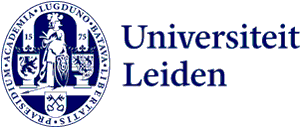
A circular economy is about much more than just recycling
It’s Circular Economy Week, from 1 to 6 February. But what is it that makes an economy circular? And just how circular is our university? René Kleijn, lecturer on the honours class Circular Economy: from challenge to opportunity, explains.
What exactly is a circular economy?
René laughs. ‘How much time do you have? At the beginning of the course, I always give my students an article to read, which contains 150 definitions of circular economy. But basically, what it comes down to is that you keep using materials, raw materials or products at the highest possible level. When you say circular economy, people often think of recycling but that’s actually a very low level of re-use. It’s also about redesign: designing products differently, using other materials, for example. And there’s even a level above that, which we call rethink: asking ourselves whether we really need the product at all. And I have to say that, in my opinion, a circular economy is not a goal in itself. It’s a means by which we can make our society more sustainable.’
You teach the Circular Economy: from challenge to opportunity honours class. What sorts of assignment are the students given?
‘The honours class consists of a theoretical and a practical part. The practical part involves groups of the students being given a case study somewhere in the Leiden region, at a company, local authority or other organisation, for example. The students then help with a project or problem related to circularity. One example of this is the construction of BioPartner5, a new building on the Bio Science Park. Circularity was definitely important there: steel girders from the old Gorlaeus Building were used in its construction. The students’ assignment was: come up with a circular canteen. The nice thing is that you can take a really broad approach: one person gets straight to work on the furniture, another on the selection of food and drink, while a third thinks about the look and whether you can use it to influence people’s behaviour.
‘Another group looked at the waste from the LUMC operating theatres. Naturally, an awful lot of material is used only once in a hospital. That’s logical, from a hygiene point of view. But the hospital is also searching for ways of working more sustainably. So the students asked themselves: are there any materials that use less packaging, or alternative products that you can sterilise and reuse? And what is there to be gained by separating waste more efficiently? They’re making an analysis which the hospital can subsequently use.’
Sustainability is a major theme for the University, as a ‘business’. How circular is the running of the University?
‘I think that the University focuses quite a lot on sustainability and incorporates it into the business practices. A lot of waste is separated and recycled, there is a roof full of solar panels on the Faculty of Science lecture halls building and the old Gorlaeus Building was demolished sustainably. Leiden University Green Office (LUGO, ed.) also plays an important part in raising student and staff awareness and demonstrating what’s happening in this field. And the theme of circular economy is featuring in more and more subjects and study programmes; in the Master’s in Industrial Technology and the new Master’s in Governance of Sustainability of course, but also in Life Science and Technology and the new Bachelor’s in Law, And in addition to mainstream classes, we develop MOOCs on this theme which everyone can take.
‘Here at Leiden University, a lot of research is being done into circularity and sustainable alternatives for energy, for example. As well as presenting all those results to society and industry, we also have a responsibility as a university to play a leading role. Sure, there are always things that could be better. But with LUGO, the new vision on sustainability in the making and a new President of the Executive Board with sustainability her portfolio, Leiden is well on track.’
